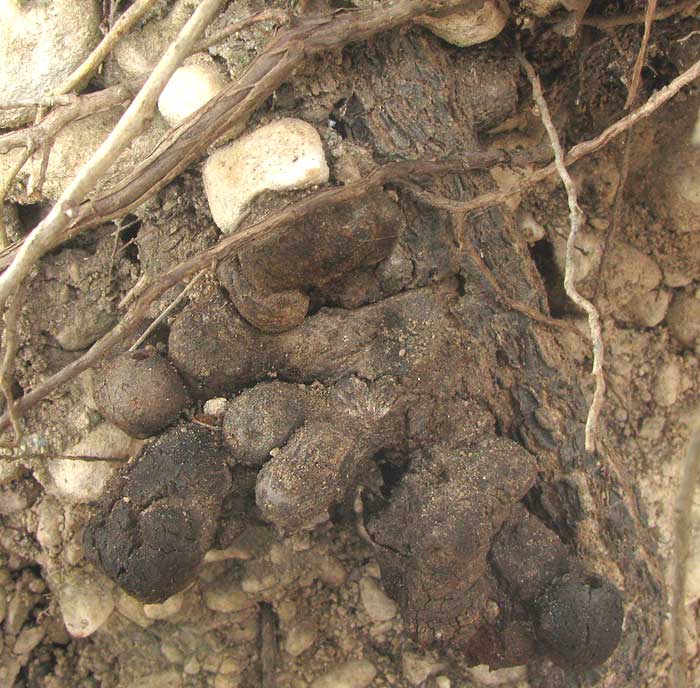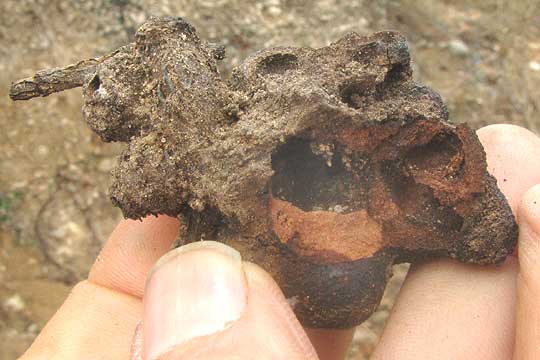Excerpts from Jim Conrad's
Naturalist Newsletter

from the January 12, 2014 Newsletter issued from the Frio Canyon Nature Education Center in the valley of the Dry Frio River in northern Uvalde County, southwestern Texas, on the southern border of the Edwards Plateau; elevation ~1750m (~5750 ft); N29.62°, W99.86°; USA
OAK ROOT GALLS
A Texas Liveoaks' roots emerged from a vertical roadcut face with some of its rootlets bearing tumor-like growths, as shown above. Below, you can get a better feeling for the growth's size in the next picture, showing a nodule that had been dangling in the air from a small rootlet, and which has been opened to show cavities inside it:

Once I saw the cavities I figured we had a root gall, for the cavities must have been made by larvae developing within the growths. I hadn't known about "root galls," but over the years I've encountered so many kinds on leaves, stems, in flowers and on fruits, that I didn't doubt at all that roots mush have galls, too.
On the Internet our root galls fairly well match those formed on oaks by the Oak Apple Gall Wasp, Biorhiza pallida, which occurs both in Europe and North America. Previously we've seen two different kinds of Oak Apple Gall on oaks in Mississippi and California, but neither was produced by Biorhiza pallida. Also, I haven't noticed Oak Apple Galls here, so I'm not sure who produced this gall.
The name "Oak Apple Gall" is applied to an apple-like gall appearing on oak stems, not roots. However, the tiny wasp producing the stem galls also produces them on the roots. Here's how that happens:
The wasp overwinters as an egg and then a grub-type larva in a root gall such as in our photograph, then emerges in the spring as a wingless female. This female climbs an oak trunk and lays eggs in young buds. Leaf tissue around the eggs swells and softens until the "oak apple gall" is formed, which is about two inches (5 cm) in diameter. The larva feeds on the gall, maybe sharing it with several other larvae. Males and females emerge from different galls after two to three months. After mating, the females descend to the ground and lay eggs on the roots, starting the cycle over again.
Not being sure that we're dealing with galls formed by Biorhiza pallida, it's not certain that that's exactly the story behind our galls, but probably it's close enough.